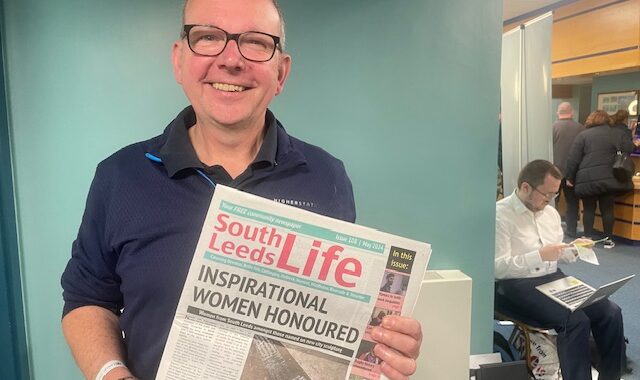There’s a lot going on in Altrincham.
Aside from the recent arrival of a new £19m bus station, £17m hospital and a rapturously received market refurbishment, there are also the myriad issues you’d quite reasonably expect from a population nudging 75,000. It may have some of the country’s best schools and most expensive houses, but it’s also a place very much in transition, a 700-year-old market town finding its feet in the modern world.
Forty years ago these kind of issues were covered by the Altrincham Guardian, a newspaper dedicated to the town’s news. Now, the traditional media scene is thin, to say the least. The Manchester Evening News will only set foot in the town if there’s a story of enough consequence for it to dispatch a reporter to tweet and Vine their way through a running blog. There used to be the Sale and Altrincham Advertiser, but the MEN’s owner, Trinity Mirror, closed that down last year and replaced it with the altogether delocalised Manchester Weekly News.
 The local weekly, the Sale and Altrincham Messenger, was so chock-full of advertising when I worked a placement on it 20 years ago that you could barely squeeze it through the letterbox. Now you can comfortably slide it under the crack at the bottom. Reporting has been outsourced and centralised, and shortly before Christmas, owner Newsquest sadly announced it would be cutting the Messenger’s editorial team in half – from two to one, that is.
The local weekly, the Sale and Altrincham Messenger, was so chock-full of advertising when I worked a placement on it 20 years ago that you could barely squeeze it through the letterbox. Now you can comfortably slide it under the crack at the bottom. Reporting has been outsourced and centralised, and shortly before Christmas, owner Newsquest sadly announced it would be cutting the Messenger’s editorial team in half – from two to one, that is.
It was in the face of this kind of creeping news void that, 18 months ago, I decided to try and do something about it. It was clear that the appetite for local news hadn’t diminished, but the method of delivery clearly needed to. I was intrigued as to whether the secret lay in returning to the increasingly unfashionable means of local news generation: a journalist at the heart of the community, with a patch small enough that he or she could comfortably stay across any news of consequence. The twist with this model was that the journalist would act not only as reporter, but as sub-editor, social media community manager, website administrator, photographer and videographer. Everything, in other words, that a smartphone and laptop enabled you to now be, to a competent level at least, without a huge amount of training.
So I set up Altrincham Today, a mobile-first hyperlocal news website, as a kind of concept test. Within a week, I had a 12-month advertising deal, and it currently gets around 80,000 unique visitors a month, the vast majority of whom live a stone’s throw from Altrincham. It has approaching 6,000 Twitter followers and almost 8,500 people have now liked our Facebook page (the Messenger has under 2,000). Engagement is through the roof – individual stories regularly attract over 500 likes and videos are often watched by 20,000 people plus.
Before long, a pattern emerged: people in other places would say to say to me that they wished there was something like Altrincham Today in their town, and fellow journalists would tentatively enquire as to how they would go about doing something similar themselves.
So I began an extensive redesign process with Laser Red, the web development agency responsible for a site I really admired, The Lincolnite. A dominant priority throughout was the need for the site to look and work fantastically on mobile, and it was also created on a WordPress platform that enabled network replication.
At the same time as the new design went live last September, I launched Hyperlocal Today. This aims to build a network of hyperlocal news websites across the country, hopefully meeting the needs of both people and journalists in increasingly news-starved places.
Using a licensing model, it looks to remove all those barriers and pain points that previously discouraged many journalists from doing it themselves. There’s no prohibitive outlay on a well-designed site, and all ongoing issues – hosting, technical support, site maintenance, graphic design, training, invoicing services and legal cover – are taken care of. Each site editor is left to focus on producing content and building a community, and ultimately providing a very valuable service within their community.
But what about revenue, I hear you ask. Well, given the diminishing local marketing channels available to businesses, a highly targeted hyperlocal community has arguably much more value to an advertiser than a weekly newspaper covering a vaguer cluster of towns and villages. Each site offers various display and native advertising packages which are promoted by the editor on the ground with a good deal of support centrally. We’re blessed with very good feedback, particularly from native advertisers.
The Hyperlocal Today model seems to have struck a chord. Inside the first three months, we’ve had enquiries from across the UK, Scotland, Ireland and even Australia. Our first new site, West Kirby Today, launched a couple of weeks ago with two highly experienced journalists at the helm. Its Facebook community is already approaching 2,000 and its content is well-read and viewed – one recent video of its storm-lashed marina has been watched over 20,000 times. It’s even prompted Press Gazette to suggest that we are “on the cusp of a ground-up renaissance for local journalism”.
More sites are coming, with Stockport Today and Burnley Today up next. We’re also about to agree a deal with a group of community newspapers who had been looking for a cost-effective, resource-light way to move online.
I’d welcome a chat with any journalists who are interested in doing it for themselves – if you have at least 10 hours’ capacity in your week, you can do it.
Like Altrincham, there are huge swathes of the country where local stories are going unreported, stories that help to bind a community and document the ebb and flow of its people, issues, events and landscape.
David Prior is the founder of Hyperlocal Today and Altrincham Today.
Homepage image accompanying this article is reproduced under Creative Commons license.





